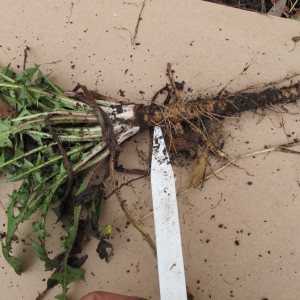Lessons from an Asparagus Patch
On a recent cold, gray Sunday I was looking for a good project to do in my garden. I decided to clean up my asparagus bed and get rid of last summer’s dead stalks and those sneaky weeds that had avoided my lethal grip. I had planted a new asparagus patch in 2012, so this is the first year that I can harvest a few stalks – and I can’t wait. I want to give my asparagus every advantage.
First, some basic information about asparagus. It is a perennial vegetable that, well tended, can produce for 25 years or more. It often grows in the wild, especially along roadsides where it competes with grasses and weeds. But in the garden it’s a fussbudget and won’t do well unless kept well weeded. In the wild it is known to grow in marshy places, too, but domesticated asparagus prefers well drained soil – but not dry soil. And full sun is best.
Asparagus roots radiate out from the center of the plant, and can be quite near the surface. When weeding it’s important not to disturb the roots, and to recognize them and cover them up if you expose them. The roots are brown and can be the diameter of a pencil lead near the tips, to the diameter of a pencil itself near the center of the plant.
I use a CobraHead Weeder which I like a lot. It is a single-tined weeder that works like a curved steel finger. It allows me to get at weed roots without disturbing the asparagus roots. In my bed I had a fair number of dandelions. I pushed my weeder into the soil about 4 to 6 inches, and then dragged it toward me on one side of the dandelion and then on the other side. That loosened up the soil without breaking off its deep tap root which resembles a scrawny carrot.
Next I grabbed the dandelion below the crown and applied gentle upward pressure so that I would not snap off the root. As with most perennial weeds, a morsel of the root left in the ground will grow and start over again. Most every time I got the entire root system.
Grasses, particularly witch grass, can be a real problem in the garden, and I had a little in my asparagus patch, though not a lot. Witch grass spreads by rhizomes, or roots that extend laterally. I get under the grass with my curved tool, apply some pressure from below at the same time lifting from above. Gently, so as to avoid breaking the white roots. Then, as the grass comes out, I am able to see where the roots are going, and tease them out, loosening the soil with my CobraHead and lifting. I often got roots that were 18 inches long or more. The roots have nodules where more grass leaves grow, so if you break off a root at a nodule, the plant continues to grow.
The ground was still quite wet when I was weeding my asparagus patch, so I stayed out of the bed itself as stepping in it would compress the soil and might damage roots. I brought along a kneeling pad – a simple foam pad – that kept my knees dry and protected them from sharp rocks. Some gardeners like kneepads for that function, but I’ve never found them terribly comfortable.
I plan to add 3 to 4 inches of compost over my asparagus bed, but first I want any weed seeds or broken bits of root to send up their new growth. I will remove those weeds, and then apply compost and a layer of mulch. We need some warm sun to get the weeds growing.
For mulch I use wood chips that I get from a local arborist by the truckload. They are free and easy to spread. I’ll wait until the soil has dried out and the tender asparagus shoots are poking up. I leave a little ring around the location of each plant to make life easier for my asparagus.
I know a fellow who bought a nice house with a mature asparagus patch. He loved asparagus and delighted in his free daily dose of it. But he wouldn’t stop picking, despite my warnings. For a young patch, pick for a month. For a healthy mature patch, six weeks is good. But never pick for more than 8 weeks. Asparagus needs plenty of time to re-charge its batteries, if you will. The fronds are actually leaves, and they need time to produce the food necessary for the roots to thrive. But he kept on picking long past the 8 weeks, and the next year he barely got a crop.
One last thought: if you are buying asparagus roots to plant, pick a variety that produces all male plants. The ‘Jersey’ series is all male, but the ‘Martha Washington’ roots are not – they will produce seeds, which is a waste of energy, and will produce lots of babies that will crowd your mature plants.
Henry Homeyer can be reached at henry.homeyer@comcast.net. His Web site is www.Gardening-Guy.com. He is the author of 4 gardening books and Wobar and the Quest for the Magic Calumet, a children’s fantasy adventure.



